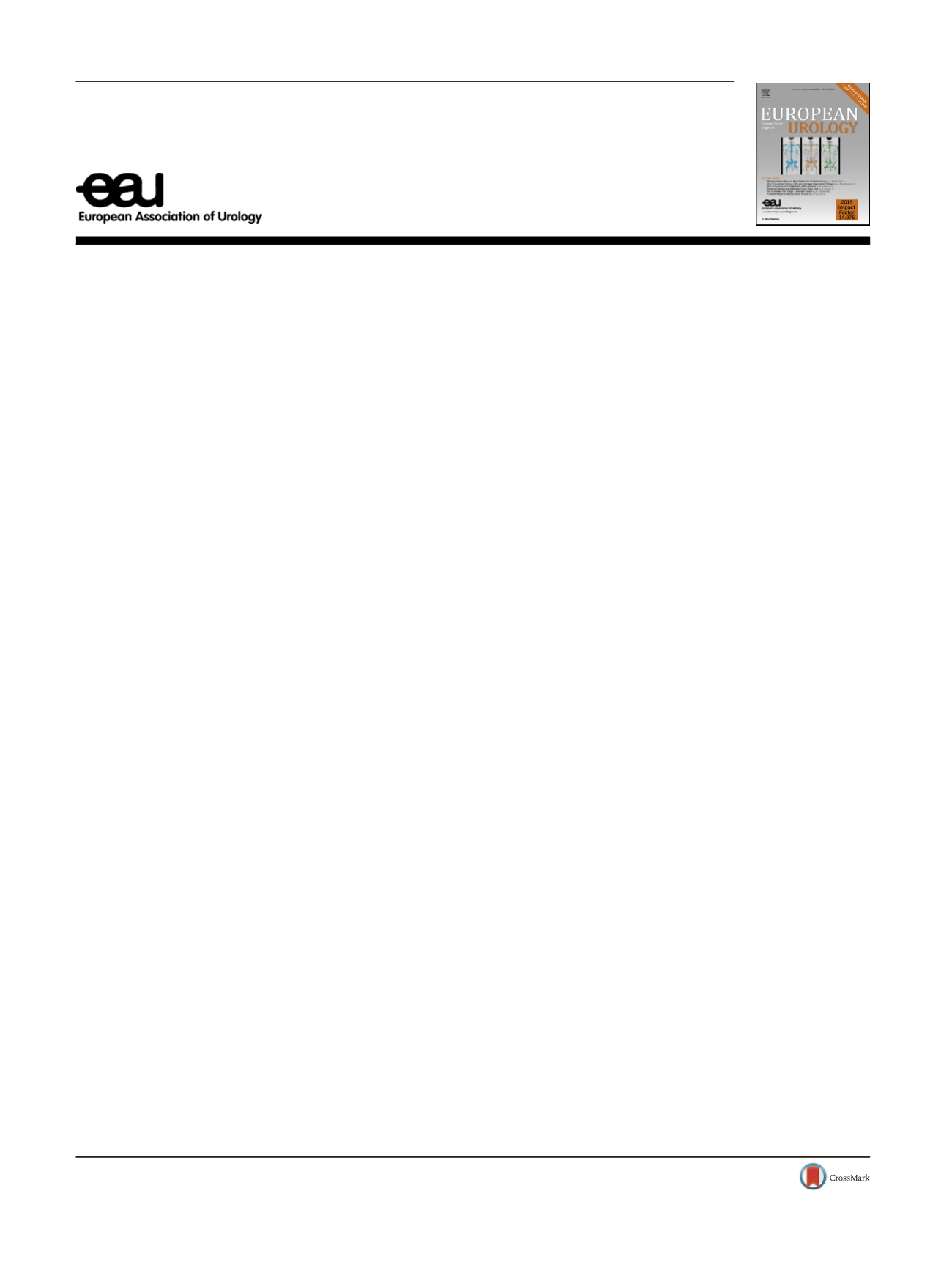

Platinum Priority
–
Editorial
Referring to the article published on pp. 986
–
997 of this issue
One Strategy Does Not Fit All: The Era of Personalised Medicine for
the Treatment of Male Lower Urinary Tract Symptoms Is upon Us
Rebecca L. Tregunna
a , * , Paul Cathcart b , Matthew F. Bultitude b[1_TD$DIFF]
a
Department of Urology, Heart of England NHS Foundation Trust, Birmingham, UK;
b
Urology Centre, Guy's and St Thomas
’
NHS Foundation Trust,
London, UK
In this month's issue of
European Urology
, Magistro et al
[1]report on the latest literature in a narrative review of
emerging minimally invasive treatment (MIT) options for
male lower urinary tract symptoms (LUTS). They discuss
four different novel techniques for the management of male
LUTS, namely, intraprostatic injectables, mechanical
devices including prostatic urethral lift (PUL), prostatic
artery embolisation (PAE), and new techniques for tissue
ablation. Many readers are likely to have heard about, but
not performed, these novel techniques, and thus this article
provides a timely update on a rapidly advancing field.
The literature on male LUTS is littered with new and
hopeful techniques that promise much but often fail to
embed themselves into day-to-day urological practice.
Transurethral microwave therapy, needle ablation, and
prostatic stents, while all recommended by the European
Association of Urology guidelines, have been consigned
largely to the history books, and so the question remains:
Will these new techniques described stand the test of time?
Of these, the evidence base is greatest for PUL
—
more
commonly known as the Urolift, which has acquired
regulatory approval for use in several countries including
the USA, Australia, and many countries in Europe. Data from
a number of randomised controlled trials have demonstrat-
ed that the technique is able to significantly improve male
LUTS. In comparison with transurethral resection of the
prostate (TURP), Urolift would appear inferior in terms of
improvement in International Prostate Symptom Score
(IPSS), Qmax, and reduction in postvoid residual
—
arguably
the most important outcomes required for men with LUTS
[2] .On the contrary, Urolift can be a day-case procedure
performed under local anaesthetic with the benefit that it
has minimal impact on ejaculatory function
—
a well-known
complication of TURP. There is no doubt that for some men,
deterioration in sexual function significantly impacts
quality of life, and as such, Urolift would appear advanta-
geous compared with TURP for a select population of men
with LUTS.
The evidence base for the other MITs discussed in the
review is limited. The initial enthusiasm for intraprostatic
injectables has unfortunately not come to fruition. Neither
botulinum neurotoxin A nor NX-1207 has been shown to be
of benefit over placebo, while initial success (61% improve-
ment in Qmax) with PRX302
—
a highly toxic pore-forming
protein that causes cell death by generating pores within
the plasma membrane
—
has been demonstrated to have at
best modest efficacy in a larger phase 3 study (1.02 point
benefit in IPSS vs control)
[3] .In comparison, ablation of prostate tissue using an
image-guided robotic waterjet, a system known as Aqua-
beam, potentially offers a realistic alternative to TURP,
although the data evaluating this technique are very much
in their infancy
—
a finding that appears not to be highlighted
in the current review. Data presented at the American
Urological Association this year have demonstrated that
aquablation, when tested against TURP in a randomised,
blinded, multicentre phase 3 study, was as effective as TURP,
removing a similar volume of prostate tissue, while tissue
removal time was significantly shorter
[4] .If more data
were to confirm this, aquablation could really change the
management of male LUTS as the procedure is less operator
dependent than TURP and without a significant learning
E U R O P E A N U R O L O GY 7 2 ( 2 0 17 ) 9 9 8 – 9 9 9available at
www.scienced irect.comjournal homepage:
www.europeanurology.comDOI of original article:
http://dx.doi.org/10.1016/j.eururo.2017.07.005 .* Corresponding author. Department of Urology, Heartlands Hospital, Bordesley Green, Birmingham B9 5SS, UK. Tel. +44 0 121 424 2000;
Fax: +44 0121 424 2200.
E-mail address:
Rebecca.tregunna@doctors.org.uk(R.L. Tregunna).
http://dx.doi.org/10.1016/j.eururo.2017.07.0420302-2838/© 2017 European Association of Urology. Published by Elsevier B.V. All rights reserved.
















